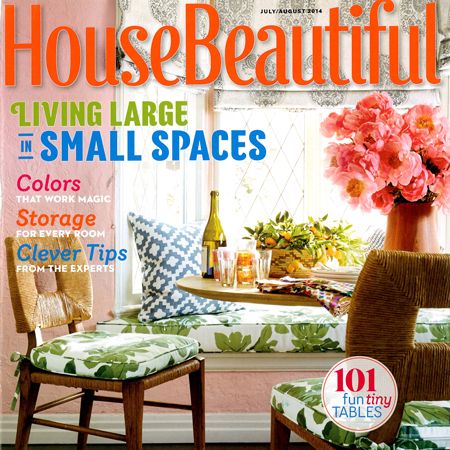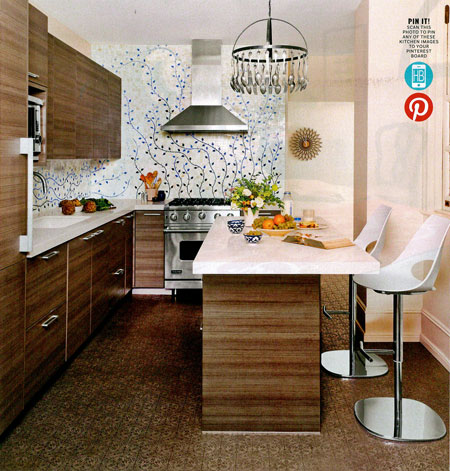Viking Featured in House Beautiful Magazine Kitchen of the Month

Kitchen of the Month
Design by Caroline Beaupere
Interview by Christine Pittel
Photographs by Peter Murdock
Christine Pittel: What are all those trailing vines doing in a sleek, modern kitchen?
Caroline Beaupere: That backsplash is the focal point of the kitchen and the origin of the entire design. Typically, you specify cabinets first and then fill in the backsplash later. But in this case, we started with a question: What can we do to make this kitchen more exciting? It was in the back of the apartment and looked out on an air shaft. We needed a 'Wow!' moment, and the backsplash was our opportunity.
What made you think of vines?
I wanted something with energy and life. We've been doing a lot of custom tilework, and I had this idea of vines that would start out under cabinets and grow horizontally until they got to the range. Then they would switch direction and grow vertically until they practically wrapped around the hood.
Is the pattern painted on the tile?
No, it's a mural made for us out of glass tile by Ann Sacks. I sent them full-size drawings of the vines, and every single piece - each leaf and stem - was hand cut and then assembled into this interlocking puzzle.
What are the vines blue rather than green?
Green or brown would have been too obvious, I thought, and blue seemed more vibrant. With glass tile you can get any color you want, and we went through them all. The blues were particularly deep and luscious, and I could play with several shades. The leaves start out dark and gradually get lighter. With blue, it's not literal; it's fantasy.
The blues have a white background. Is that why you chose white countertop?
Yes. I wanted to keep the design clean, and I knew white would make the backsplash pop. I didn't want to introduce another color or anything like marble, with its veining, because that would have competed with the vines. And I wanted a pure white, but with three kids in the family, we also didn't want to worry about staining or chipping. Caesarstone was the answer.
Why didn't you do the cabinets in white as well?
It would have been too cold, and I wanted something more earthy. But they still had to be contemporary. That's why these Poggenpohl cabinets have clean lines, but they still feel warm.
You chose stainless steel appliances. Why didn't you choose a stainless steel sink?
I wanted the sink to be seamlessly integrated into the countertop, and the white enamel blends in nicely with the white Caesarstone.

The Viking range is paired with a hood from Rest Range Hoods. Andy Fleishman Maximus concrete floor tiles from Ann Sacks. Stools from ABC Carpet & Home.
Is that Caesarstone on the island as well?
Yes. It's a big island - as big as we could make it without interrupting the flow of traffic - and that large slab of Caesarstone make the room feel brighter. We used it on top, and then we continued it down one side in what's known as a waterfall. It's an architectural element that gives the island more of a personality. And the big, wide drawers offer lots of storage.
What did you do on the floor?
Those are concrete tiles, hexagonally shaped, but there's something even more unusual about them. The pattern is scored into the surface and you fill it in with grout so the color of the grout really determines the effect. We went with a soft gray, slightly darker than the tile, which allows the pattern to show without being overwhelming. The curves relate to the curves of the vines and add a nice contrast to the rectilinear cabinets. But it all works together. The whole kitchen feels very organic.


